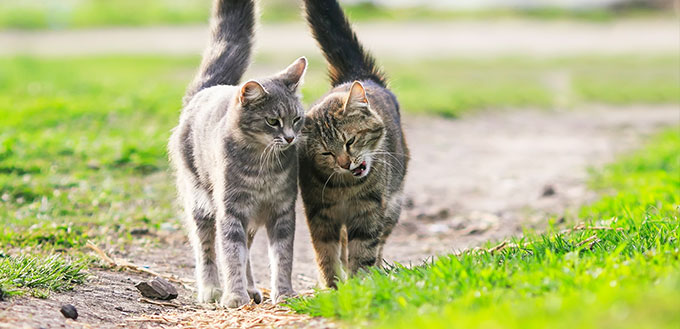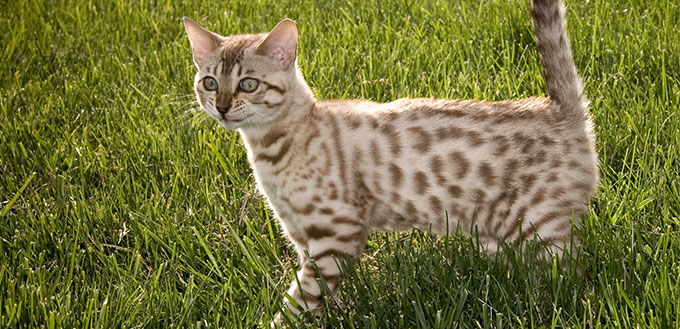It is a natural law that all cats are territorial. That is simply how they have been designed. For wild cats, creating and establishing their territories is the only way they’re able to claim a specific area as their eating or sleeping place. No doubt, their boundaries are their home base and the single space within which they undertake mating, feeding, and many other activities.
Whenever a cat has a territory, it becomes the place where all their meals are kept. In the wild, these territories comprise a broad network of paths and nodes, often patrolled by the cats which might be done randomly or on a fixed schedule or randomly; regardless of which, it remains consistent.
No doubt, many cat owners often wonder if their domestic animals are also as territorial, and this article seeks to discover the best response. It further helps to understand why cats are territorial, the common signs of cat territorial behavior, and what to do when they exhibit such symptoms.
Why are Cats Territorial?
According to a number of studies, cats of both genders tend to get very protective and territorial when interloping cats are invading their turf. Also, intact male cats usually display signs of territorial behavior during the mating season. They can mark their territory within your yard, the entire neighborhood, your block, or even in your room.
There are various reasons why cats exhibit territorial behavior, the first being that your cat might be poorly socialized. This usually occurs with younger cats, and it gets stronger as they grow and move into another household. Additionally, cats get territorial when they enter new families, or when another cat is brought into their family.
Such territorial actions often lead your cat to become physical or noisy. Some experts believe that this behavior comes from a place of insecurity. Felines love to be control freaks; thus, they thrive on predictability. What’s more, the disturbance of their daily routines may cause them to get aggressive quickly. Other causes related to predictability includes new sounds, smells, eating, and getting up at different times.

Territorial Behaviour in Cats
If you have a cat who is acting territorial, several signs make it easy for you to know. Cats are much like humans, with their symptoms of aggression and agitation; thus, the following signals will be easy to identify. There is a wide range of territorial behaviors, from destructive actions such as clawing furniture, to most good acts like scent marking and the rubbing of their chins on all household projects.
There are also hazardous actions such as biting, clawing, and fighting, with the final one being a series of obnoxious steps, including relieving themselves outside the litter box or spraying urine on walls. In most cases, cats make use of their scent to warn other cats which are done because cats are naturally sensitive to smells. What’s more, their urine thus acts as a type of fence.
Redirected aggression is a trigger that pet parents can activate inadvertently. When this trigger is activated, cats lash out at other cats or their owners. Furthermore, when a cat marks territory, their actions may include growling, swatting, hissing, staring, and biting. Most often, these acts are unpredictable and sudden, and they might lead to a final deadly attack.
Additionally, cats tend to get territorial as they mature. For this reason, it is advised that pet owners keep their pets engaged from 3-12 weeks after their birth. Socializing will include visits to the vet, interaction with pets, and walks in the neighborhood. Getting your feline to socialize doesn’t always work out, but it’s often worth the effort.
Check out our article on: How to Get Rid Of Cat Spray Smell
Dealing with Territorial Behaviour in Cats
The first thing to do feline owners is advised to do when they first identify territorial behavior in their cats is to schedule a visit to the vet. The vet appointment is made to ensure that there are no medical issues that are causing these signs of aggression. Scientists state that spaying and neutering are the best solutions for intact cats.
Experts offer these as a solution because the process addresses hormonal triggers. Many other steps can be undertaken to adequately address territorial behavior in cats, including restricting access to all rooms and areas with a tendency to be marked. Also, all items need to be positioned right to prevent them from becoming a target for territorial marking.
In some instances, interaction might be a huge trigger, and this can affect the relationship between your pets. To reduce the rate at which your cats fight, we will suggest you keep them separate, instead of allowing both felines roam the house at the same time. If your cats hate contact with other cats in the neighborhood, it is best to keep them indoors, block your windows and close all blinds.

What to Do When Your Cat Is Acting Aggressively
Aggressive action from cats might be natural, or it might be a sign of something serious. For aggressive cats, the first and easiest thing anyone can do is to soothe the cat or pick him/her up. The result of such an action is redirected aggression that might cause the pet owner to be scratched or bitten.
Another action you can try is to shepherd the cat quietly into a room and shut the door. For highly reactive cats, you may not want to engage them fully, since their reaction can impact the whole relationship. However, be mindful of the cat and its reaction to other cats. Watch out for signs such as tail flicking, staring and growling and try to address each one before any substantial disagreement starts. You are likely to get bitten if you decide to pick an agitated act; thus, you can hose them with water or throw a thick blanket over your cats if they’ve already started fighting.
No doubt, cats are one of the best pets in the world, and also the cutest too. Keeping them happy should be the aim of every pet owner.
Sources:
- Territory, The Ohio State University
- Aggression in Cats, The ASPCA
- Cat Aggression Toward Other Cats: Steps for Changing Aggressive Feline Behavior, Best Friends Animal Society






